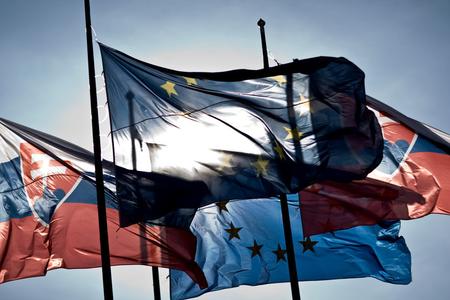Vladimir Zlacký is Founder of LookingEast.eu
Investment Advisory Guide
Well-arranged information about the economy, labour market, investor support, legislation, and real estate as well as investment opportunities in Slovakia. For more details visit our online shop.
After the 1989 Velvet Revolution, Slovakia, then part of former Czechoslovakia, embarked upon the road to building a new socio-economic system based on market principles and liberal democracy.
A thorough transformation of its economy was needed as the country significantly lagged behind the developed West at its income level; the growth of the centrally planned economy ran out of steam as various inefficiencies and a lack of innovative vibrancy were brought to the fore, leading to relatively low labor productivity achieved by the end of the 1980s (compared to the West).
The initial reforms orchestrated and pushed from Prague in the area of liberalisation, privatisation, and stabilisation led to the quick transformation of the centrally planned economy, into one run by market principles (if a bit imperfectly). Later reforms focused on building institutions - to a large extent driven by institutional harmonisation in the run-up to EU membership - further strengthening the economic capacity of the country, resulting in a reduction of country risk, the inflow of foreign direct investments and other foreign capital, and later an economic takeoff in the second half of the 2000s.
Over the last three decades, the country has traveled a long and thorny path, but the result is one of substantial economic convergence. To illustrate: in 2019, the income per capita in Slovakia, recalculated to take account of differing prices across borders (PPS), reached 72 percent of the EU28 level while in 1993 the figure was under 40 percent.
Undeniable economic progress
An even more staggering picture is provided by a look at the created GDP in current prices expressed in foreign currency. While in 1993, the GDP of Slovakia - i.e. the market value of all goods and services produced in the country -reached about 337 billion Slovak crowns (less than €10 billion). (1)
Since 1993, the annual GDP has thus increased about tenfold, to €94 billion in 2019. This is a remarkable scale of economic expansion in Slovakia (even if expressed in nominal figures) and was driven by three factors: a relatively high real GDP growth; extra inflation driven by price convergence; and a substantial nominal currency appreciation of the Slovak crown vis-a-vis the euro.

This obviously does not mean the level of wellbeing of an average person has increased to the same extent, as this is a figure expressed in nominal terms. Yet it says something about the size of the economy and how Slovakia has progressed economically over the last nearly three decades.
Structurally, the high GDP growth was driven mostly by the industrial sector. For instance, in the high growth decade of 2001-2010, nearly half the addition to the growth of value-added created by the economy was due to the manufacturing sector (2). Automotive and electronics were the leading sectors with double-digit yearly growth rates recorded in that decade in both cases. Technologically, the decade of the 2000s also saw a substantial upgrade of production, when by the end of that decade nearly 40 percent of the manufacturing sector’s production was of a high to medium-high tech variety. This means that the share nearly doubled over the 10 years.
Bolstering human capital a must
In 2010-2019, the convergence rate has subsided and the end of it has brought substantial challenges. The Industrial Revolution 4.0, to borrow the name from the WEF parlance, brings an enormous amount of innovations to the market, meaning that structural changes are inevitable for the Slovak economy to remain competitive.
The upcoming robotisation and automatisation will disrupt the marketplace and several leading manufacturing sectors will likely need to streamline their operations in terms of the employed labor.

The value-ladder augmentation of the car/engineering cluster towards higher value-added activities will probably be necessary for the cluster to maintain its relative importance. Manufacturing start-ups tapping into an expected pool of labour made available by the upcoming AI revolution would be highly needed, but their proliferation of any significance will represent a substantial challenge.
Services sectors will not remain immune to the AI revolution and shared and other services will have to adjust. However, in the author’s view, it is the sector of sophisticated exportable services - be that IT sector, sophisticated professional, consulting, and high-end tourism services, perhaps focusing on the eastern markets (such as China) - that could be the source of the Slovak economy's future dynamism (3). These services derive their value mostly from human talent - hence an urgent need to bolster the human-capital formation sector; perhaps also tapping into the announced massive EU sponsored aid, so that these services spring up over more widely in a foreseeable time horizon.
Domestic sources of growth
In a nutshell, in the next decade, Slovakia will probably need to focus more on domestic sources of growth to complement foreign direct investments as those will be harder to get.
Improvements in the business environment, strong support of the domestic start-up scene and of human capital formation, alongside further institutional improvements leading to lower country risk, will be the key improving the competitiveness of the Slovak economy.
Seen in this light, the recent batch of business environment reforms is a welcome step in a positive direction. Just as important is the data-driven and sophisticated country growth strategy adopted by the local policymakers. It would be a highly needed yardstick to project pro-growth policies for a multiyear horizon.

1) Slovenská ekonomika 1990-1993; Akademický project FM UK, 1994,
Vladimir Zlacký, Ľuboš Pástor, Ján Tóth
2) Slovak Growth Story: All about Manufacturing, UniCredit report, 2012,
published on LookingEast.eu.
3) On an anecdotal note, even as specialised services as tennis academies (bringing foreign kids in for practice) or high-end marketing or interior design studios, which undertake projects outside of the country could be examples of high value-added exportable services.


 (source: SITA/AP)
(source: SITA/AP)